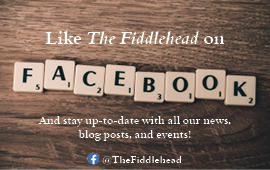Poetry and techno are like two of my mind’s closest friends that continually flirt with each other to the point that I’m confused as to why they don’t just quit playing around and start dating. For a while, I thought this was something that only made sense to me, and that I should just keep my opinions to myself; however, when I came across an article in The Atlantic, titled "The Death of the Artist” by William Deresiewicz, I began to think that this is a match that is more plausible than I first thought it would be in a real world setting. Thoughts were immediately sparked about the state of poetry today, and how we can increase poetry’s popularity moving forward. Perhaps it is time we focus more on the promotion of poetry through a multitude of mediums. Perhaps it is time we focus more on creating an experience for an audience to enjoy as a whole.
William Deresiewicz provides a convincing portrait on the state of the artist in today’s society, which makes me believe that we must change the way we see poetry in order to provide our due diligence to the art form itself. Deresiewicz highlights the emergence of the “creative entrepreneur,” stating the conception of the artist of old would focus as much time as possible on one discipline, one craft—he backs this up by saying that it is difficult to name an artist of old who has achieved a level of distinction in more than one genre (a few obvious exceptions, notwithstanding). Deresiewicz goes on to state that, today, an artist must operate with the versatility of a small business, the art itself is important, but of equal importance is the general experience or lifestyle your art creates—your value is found in the amount of people that are willing to fully subscribe to what your artistic brand represents. An artist is expected to perform on a multitude of levels in order to gain any relevance in the endless stream of online discourse, not only must they be a professional at their craft, but they also must develop a strong online presence. Of course, the risk of making a transition to this sort of medium comes with the sacrifice of the artist’s vision and authenticity: when more attention is focused on the promotion of your art, the art is surely to suffer. However, for a culture to stay alive in an age where audiences have a rapid influx of information perpetually at their disposal, changes must be made in order to fully serve the culture in question; if we are not aiming to strengthen the popularity of poetry, we are doing it the greatest disservice.
Much has been said about the state of contemporary literature, and the chasm that lies between the literature of the academy and the kind of pop-lit that is content outside of the realm of scholarship. Poetry today seems to reside in academia, and is having difficulty entering mainstream consciousness as it lay alone on the page. This proves that both readership and employment is sparse in the field. As a poet, I shudder when I think about life after scholarship. Words of comfort from professors are usually quite vague (“Oh you can get a job in ‘communications’ after you graduate” or those ubiquitous “government jobs” we keep hearing about). Dana Goia discusses the progression of poetry through the ages and how it has reached a subcultural status that is shielded and stunted by the "intelligentsia." This double-edged sword creates a paradox that is causing poetry to thrive within itself, there is a passionate group of poets, academics, and enthusiasts that create a stable base support of poetry—and there are many exciting poets in the scene today—but the question still remains as to how this audience can be expanded.
I agree that an artistic community is key to preserving the culture that we all adore, but in light of Deresiewicz’s thoughts, if we care so much about this culture, why don’t we try to promote it on a greater level? Why don’t we try and enter the mainstream consciousness and reside with the obsessive nature of the internet. Why not experiment and find a way to permeate into a subcultural tsunami that shows up on the feeds of social media? Essentially, why don’t we try to appease a greater audience? My suggestion involves Deresiewicz’s claims about the multitude of levels with which the artist should now work; a mixing of mediums is imperative to the survival of poetry. We must increase the market value of poetry, feed and foster the interest to create a greater market and audience—a greater stage—to showcase the tremendous amount of poetic talent that is found in Canada today.
Perhaps it is time for Poetry to meet Techno. There is a technical parallel running between these two subcultures that make them more similar than you may initially think.
Look for part 2 on Tuesday!
Steven Suntres is The Fiddlehead's editorial assistant, a member of QWERTY's editoral board, and a UNB graduate student.
Poetry & Techno: May Their Futures Meet at the Beat? (Part 1 of 3)
Posted on July 16, 2015










Add new comment